In recent years, indoor plants are back to the foreground of interior design and indoor well-being strategy. Here are the basic rules to make a good choice for you and your indoor plants.
Sooner or later all of us feel the curiosity, and the courage, to give it a go: “Let’s buy this beautiful indoor plant. I can do it. It will survive!”, and this feeling has a deeper origin that you can imagine, as we will see. What about if you receive a greeny gift from a family member or a friend? Your conscience will push you neither to kill the plant, at least not in the immediate, nor to kill who gave you the plant…at least not in the immediate.
Why are we attracted by indoor plants?
More and more studies, in all fields from healthcare to education to workplaces, are proving that we are not only naturally attracted by Nature; but being in contact and interact with it has enormous benefits: patients heal faster, children get better results at school and, if we go down to business, less stress in workplace makes productivity higher and even retail sales more.
We are all, consciously or unconsciously, biophilic (from Ancient Greek “lovers of life”); simply because we come from there. As species, we have evolved and lived in Nature for centuries before building our cities. This is why we have a sort of green imprint.
What we fear the most about indoor plants?
Failure. To see a dead plant makes us sad and guilty. Why do I know this? Because I managed to “kill” 11 plants of basil while living in the North of UK. It was not the fault of the basil nor of UK. In my case: a sun loving herb on a cold British windowsill was misplaced.
So, before you start planning a green revenge towards the above mentioned relative or friend or buying your next indoor plant; let’s check together a few basics that will help you in your indoor plant choice and all the benefits it can bring to your well-being.
What do you need to consider before getting started with indoor plants and interior design?
First: Indoor plants are not adornments
They are living beings which can improve aesthetically the environment where they are, but they are not just objects. They require a certain amount of care. Care that will be repaid not just by a more beautiful and attractive interior space; but with better indoor air quality, calmer mind and happier mood.
Second: ask yourself honestly “How much time I want to spend in taking care of my indoor plants?”
All answers are valid from zero to a lot, and for each of them there is a suggestion.
If your answer is zero time, but you like the effect of greenery or you have a totally dark corner which you would like to inject some life back into, invest in good quality artificial plants and flowers, possibly from recycled plastic or fabric (as silk, fully recyclable).
Of course, we encourage you to read the following basics and try living plants with all the benefit they can bring; but we also encourage you not to waste plants, water, money and time.
If your answer is above zero time, we have 3 degrees of care: low, medium, high. You can decide to start with low maintenance indoor plants presented here below and gradually challenge yourself with more demanding plants.
What do plants need?
Light, Water, CO2 (to perform photosynthesis) + Food (N, P, K).
Understanding light. Light and its intensity depends on seasons, but it also depends on how our room, flat, house is orientated. Observe where the sun rises, that is East, and where it sets, that is West. However, if you want to double-check, you can download a simple App with a Compass.
In the North hemisphere, in our latitude:
- Morning light from East is gentler, perfect for plants requiring moderate sunlight;
- Day light from South is the strongest and more intense, especially in summer. Ideal just for sun loving plants. In winter, light intensity is lower, so you can move here plants needing sunlight;
- Day/Evening light from West is less intense than the south one, but it is the longest, getting the full afternoon and evening light. It is particularly intense in summer, so once again ideal just for sun loving plants;
- Indirect light from North is the less intense of all. During summer, when the sun higher, it may be possible to grow some love shading plants; but in winter better to move plants to a different orientated room.
Understanding water. Generally, plants can suffer as much from underwatering as from overwatering. Poke your finger in the first 1-2cm of soil. If dry, it is time to water. Make sure water can drain correctly: check if there are holes at the bottom of the vase and if some of the water poured collects in the saucer under the vase. If so, all is working properly. Leave the water collected in the saucer for an hour, then remove it.
Remember the 3 Bs:
- Better to water in the morning before the sun is at its full strength;
- Better tepid (room temperature) than cold water;
- Better if water is given with a watering can than with a bottle (some plants prefer misting, sprayed droplets of water, than watering.
Consider that in winter we need to reduce the watering because the majority of the plants go dormant.
Understanding CO2. Carbon dioxide is naturally available in the air. It is what we breath out and plants breath in to produce oxygen. For the ones of us who love formulas, here is the formula of photosynthesis:
6CO2 + 6H2O ------> C6H12O6 + 6O2
Sunlight energy
Where: CO2 is carbon dioxide, H2O water, C6H12O6 is sugar and O2 is oxygen.
When it is dark, plants can’t perform photosynthesis. They keep “breathing”, however, through cellular respiration, which takes oxygen and release carbon dioxide, but in very small quantities. So, despite what old myths say, sleeping with plant is totally safe. It is by far more dangerous to sleep with your partner or your pet than plants!
Understanding food. Outdoor plants find nutrients in the soil; but for indoor plantswe need to provide them during the active growing phase, usually between spring and autumn. In winter, when the plants rest, feeding is not necessary. However, there are exceptions! For example: florists’ cyclamen is active in winter and go dormant in summer, so always check what is recommended for your specific plant.
Main elements we have to provide indoor plants with are:
- N, for Nitrogen, important for healthy foliage;
- P, for Phosphorus, important for roots;
- K, for Potash (Kalium in Latin), important for the development of flowers and fruit.
Read carefully the label of the fertilizer, in order to understand what is the ratio of components and if appropriate for your type of plant. For natural home-made fertilizer, we found particularly interesting the article on the Spruce: “How to make your own fertilizer”. Also, you can find a very handy and comprehensive guide on the 13 best homemade plant's food in this post from the Happy DIY Home blog; and in case you are a coffee lover, you could find very useful this article from Up Gardener on how to make compost out of coffee grounds.
Other things to check: Temperature and humidity. Where do you have to place your indoor plant? Think where you can find that type of plant in nature. For example: the majority of the cacti live in desertic areas, they love sunlight, warm and dry environment. So, a steamy shady bathroom is not ideal for them. However, the very same bathroom can be the perfect environment for ferns, plants that usually grow in the undergrowth of forests and they are used to reduced amount of light and high humidity.
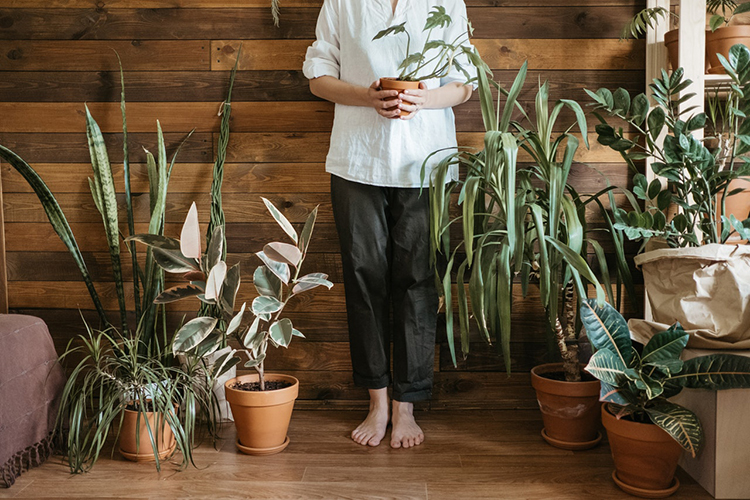
Remember also that indoor plants don’t like drastic change of temperature. Avoid to place them near radiator in winter, and air-conditioning units, in summer. Also, avoid places where airstreams are common, like in the proximity of the entrance door. Windowsills receiving direct sunlight vary in temperature a lot too, especially in summer, so better to keep plants in their proximity, but not on them. Grouping plants together, instead, can help increasing the humidity levels that they need.
A suggestion of 7 easy indoor plants to improve your well-being
Let’s now have a look to 7 easy indoor plants to grow which have also some hidden properties, that will surprise you.
Peace Lily
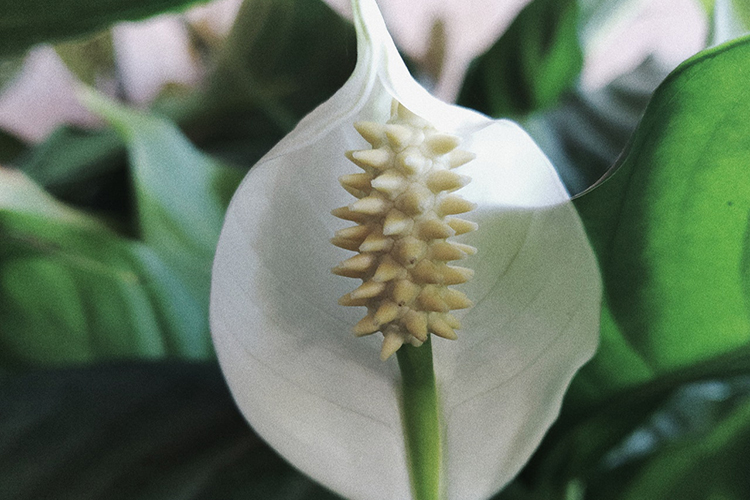
Position: Peace Lily loves bright indirect light and warm environment, so place it near your working desk, for example. It needs water just when soil is dry. Feed is needed just few times over the growing period spring-autumn. Warning: all parts are toxic, if ingested.
Did you know? It is one of the best air purifying plants according the NASA Clean Air Study. It effectively reduces all 3 of the most common indoor air pollutant benzene, formaldehyde and trichloroethylene.
Aloe Vera
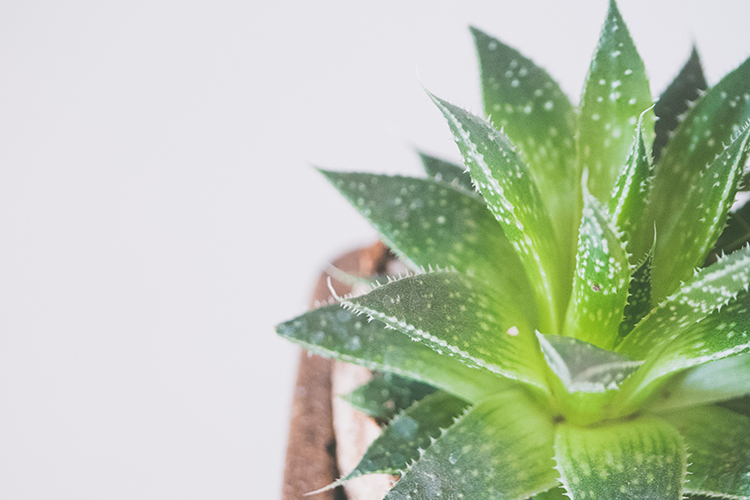
Position: Aloe loves bright spot like south facing window and needs water just when soil is dry. Feed is needed just few times over the growing period spring-autumn. It purifies the air especially from formaldehyde
Did you know? The gel (sap) inside the leaves is useful for soothing minor cooking and sun burns and skin irritation.
Boston Fern

Position: Boston fern loves humidity and indirect light, so a bathroom can be an ideal location. It needs water just when soil is dry and feed is needed just few times over the growing period spring-autumn. It purifies the air especially from formaldehyde.
Did you know? Ferns don’t produce flowers or seeds; they reproduce via spores on the undersides of the leaves.
English Ivy

Position: English Ivy loves cool, even cold indirect light spots, like in hallway, and stands well draughts. It need water just when soil is dry, feed is needed just few times over the growing period spring-autumn. Great air purifying properties, it effectively reduces all 3 of the most common indoor air pollutant benzene, formaldehyde and trichloroethylene.
Did you know? English ivy it is a self-clinging, which means that it is not necessary to attach it to any kind of fixing to make it climb on a wall. Its aerial roots attach to the wall and penetrate cracks and joint. The removal of the roots can be difficult and it may leave marks on the wall. So, this trailing plant is best placed in hanging baskets or cascading from shelves, but always watch out for rebel branches running to walls!
Spider plant

Position: Spider plants like bright spots away from direct light. Keep compost moist and feed few times over growing period spring – autumn. It purifies the air especially from formaldehyde.
Did you know? It makes “babies”. Mature plants produce at the end of long stems plantlets or babies that can be grown individually. So, you can propagate Spider plants very easily.
Missionary plant or Chinese Money plant
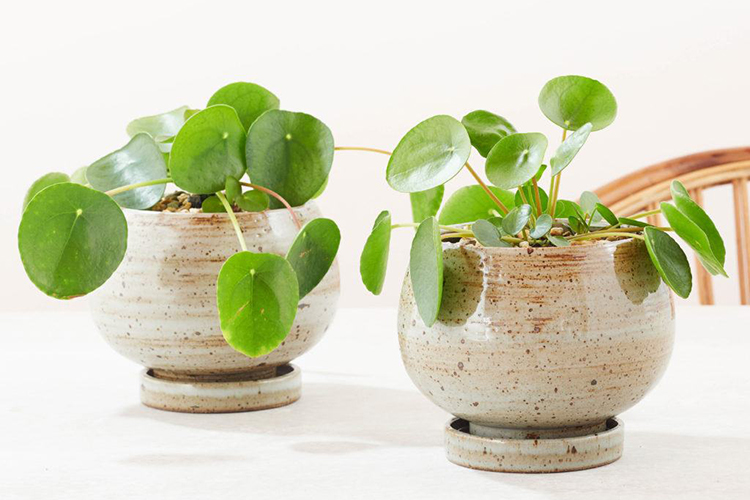
Position: Missionary plant loves warm places, make sure the temperature doesn’t go down below 12 degrees, and partial/light shade. Keep compost moist and feed few times over growing period spring – autumn. Warning: all parts are toxic, if ingested.
Did you know? It is called also Friendship plant because it propagates very easily from its roots and stems. So, you can detach easily one of the offsets from the mother plant, put it in a little vase with compost and gift a friend. This is actually how the plant seems to have been spread around Europe, among friends, before getting officially to the botanist community.
Peacock plant

Position: Peacock Plant is a rainforest plants, so it loves partial shade or bright spot, but away from direct sun. Warm places with a stable temperature and humidity are ideal, a bright bathroom or kitchen could be a good location. Keep soil moist, but not wet. If your sink water is particularly hard, use rainwater or filtered water. Feed is needed just few times over the growing period spring-autumn.
Did you know? It moves. Thanks to a small joint between the leaf and the stem, it closes the leaves during night and opens them in the morning, often accompanied by a rustling sound,
Additional resources to further your knowledge about indoor plants and interior design
Finally, just some additional recommendations before leaving you to experiment and have fun with indoor plants:
- Always ask or research if part of the plant is toxic or poisonous especially if you have young children and house pets;
- Useful website for everything dealing with plants, flowers, gardening: Royal Horticultural Society;
- Useful and easy book to start with indoor plants: Veronica Peerless – How not to kill your houseplant - DK edition (Available also in Spanish: Cómo no matar tus plantas);
- For more expert indoor plants gardeners, who are interested in display composition principles and projects: RHS - Practical House Plant Book – DK edition (not available in Spanish).
Text by Priscilla Agliardi, Architect & Datum plant lover.
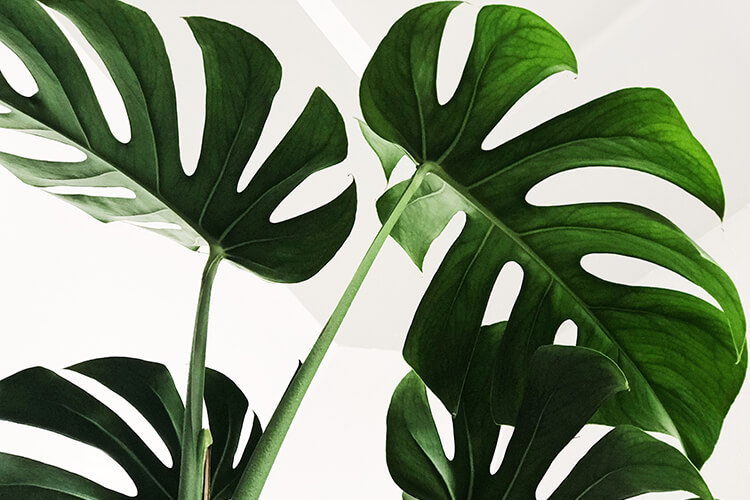
No comments.